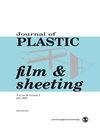为美国食品药品管理局批准的首个无菌生产的静脉注射液袋开发多层薄膜,并简要介绍医疗器械领域的重要里程碑事件
IF 1.5
4区 材料科学
Q3 MATERIALS SCIENCE, COATINGS & FILMS
引用次数: 0
摘要
20 世纪 70 年代初,市场上出现了柔性静脉注射液容器(静脉注射袋)。这些新型容器旨在取代玻璃输液瓶,并很快被广泛采用,为世界各地的患者提供医疗解决方案。在使用市售玻璃瓶静脉注射液的 40 年间,医疗保健行业取得了显著的发展,患者的治疗效果得到了改善,同时也降低了运营成本。这些早期的发展促使新型医疗设备迅速发展,并得到进一步开发,从而改善了医疗服务,降低了产品和设备的总体成本。毫不夸张地说,医疗器械行业是建立在柔性聚氯乙烯(PVC)塑料输液管和输液袋的发展基础上的。在静脉输液袋产品线发展壮大并服务于众多市场后,人们发现了一种无菌生产的预混药物容器,这是新的未满足需求。本文将回顾一种新型薄膜是如何开发并用于生产所需的无菌静脉注射预混药物产品的。在食品与药物管理局(FDA)批准 "上市 "后,这是一种开创性的产品,对于高度受 FDA 监管和控制的行业来说,这是前所未有的。本文章由计算机程序翻译,如有差异,请以英文原文为准。
Development of a multilayer film for the first US Food and Drug Administration cleared aseptically-produced intravenous solution bags with a short history of key medical device milestones
Flexible intravenous solution containers (IV bags) were introduced to the marketplace in the early 1970s. These new containers were designed to replace glass IV bottles and were quickly adopted widely for delivering medical solutions to patients throughout the world. The 40 years during which commercially available IV solutions in glass bottles were used, the healthcare industry grew dramatically with better patient outcomes while also reducing operational costs. These early developments then led to the rapid expansion of new medical devices that have been further developed to improve healthcare and reduce overall costs of the products and devices. It is not an exaggeration to suggest that the medical device industry was founded on the development of the flexible poly (vinyl chloride) (PVC) plastic IV tubing and bag. After the IV bag product lines grew to serve many markets, a new unmet need was discovered for an aseptically produced premixed drug container. This article will review how a new film was developed and used to produce the required aseptically made IV premixed drug product. It was, after the Food and Drug Administration (FDA) gave “clearance to market”, a ground-breaking product, never before thought possible for the highly FDA-regulated and controlled industry.
求助全文
通过发布文献求助,成功后即可免费获取论文全文。
去求助
来源期刊

Journal of Plastic Film & Sheeting
工程技术-材料科学:膜
CiteScore
6.00
自引率
16.10%
发文量
33
审稿时长
>12 weeks
期刊介绍:
The Journal of Plastic Film and Sheeting improves communication concerning plastic film and sheeting with major emphasis on the propogation of knowledge which will serve to advance the science and technology of these products and thus better serve industry and the ultimate consumer. The journal reports on the wide variety of advances that are rapidly taking place in the technology of plastic film and sheeting. This journal is a member of the Committee on Publication Ethics (COPE).
 求助内容:
求助内容: 应助结果提醒方式:
应助结果提醒方式:


